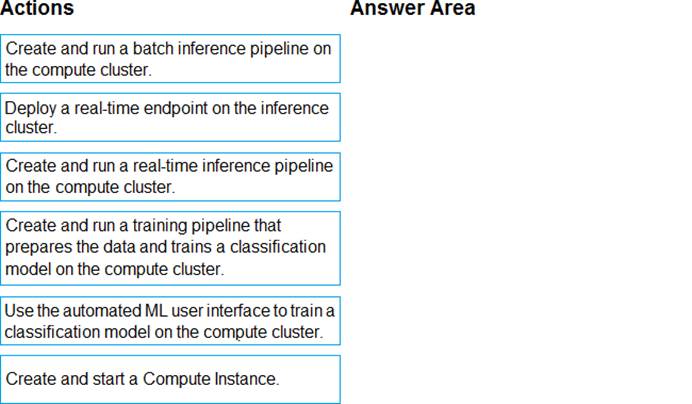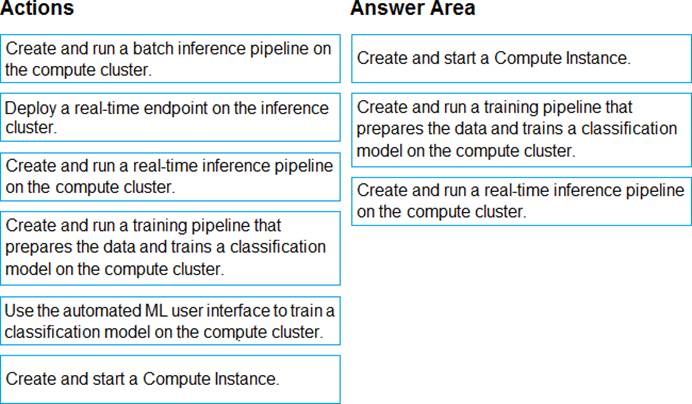DRAG DROP
You have an Azure Machine Learning workspace that contains a CPU-based compute cluster and an Azure Kubernetes Services (AKS) inference cluster. You create a tabular dataset containing data that you plan to use to create a classification model.
You need to use the Azure Machine Learning designer to create a web service through which client applications can consume the classification model by submitting new data and getting an immediate prediction as a response.
Which three actions should you perform in sequence? To answer, move the appropriate actions from the list of actions to the answer area and arrange them in the correct order.

Answer: 
Explanation:
Step 1: Create and start a Compute Instance
To train and deploy models using Azure Machine Learning designer, you need compute on which to run the training process, test the model, and host the model in a deployed service.
There are four kinds of compute resource you can create:
Compute Instances: Development workstations that data scientists can use to work with data and models.
Compute Clusters: Scalable clusters of virtual machines for on-demand processing of experiment code.
Inference Clusters: Deployment targets for predictive services that use your trained models. Attached Compute: Links to existing Azure compute resources, such as Virtual Machines or Azure Databricks clusters.
Step 2: Create and run a training pipeline..
After you’ve used data transformations to prepare the data, you can use it to train a machine learning model. Create and run a training pipeline
Step 3: Create and run a real-time inference pipeline
After creating and running a pipeline to train the model, you need a second pipeline that performs the same data transformations for new data, and then uses the trained model to inference (in other words, predict) label values based on its features. This pipeline will form the basis for a predictive service that you can publish for applications to use.
Reference: https://docs.microsoft.com/en-us/learn/modules/create-classification-model-azure-machine-learning-
designer/

Leave a Reply